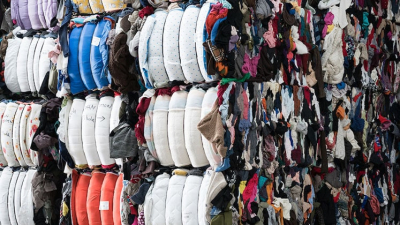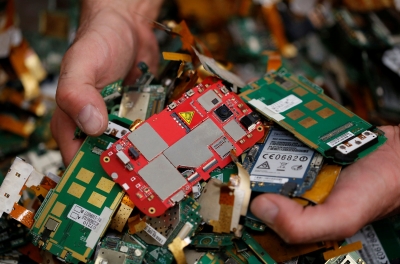How can clothes be recycled sustainably?

When the word waste' is mentioned, people immediately think of plastic, electronic or food waste. There is another type of waste that pollutes the environment almost as much. This is waste produced from clothing.
Globally, 13 million tons of discarded or used clothes are generated every year. Almost all of this waste can be reused or recycled.
Used clothing can be donated or repurposed to make mattresses, furniture, coarse yarn, paper, and clothes. Clothes that cannot be repurposed usually end up in landfills. The best way to manage this waste is by textile recycling.
Clothes can be recycled using machines. Warehouses first separate the clothes according to material and colour. Then the fabric is shredded and broken down into smaller fibres. The waste fibres are spun again along with bits of new fibre to make fabric. Usually clothes made of natural fibres like cotton and linen can be recycled this way.
Chemical processing
Clothes made of synthetic fabric require chemical processing. The materials are broken down using chemicals and then the fibres are rewoven into yarn and fabric. This process of recycling creates new fabric of the same quality as the original cloth. Many countries around the world, including India, have started producing recycled clothes using these methods.
Though reusing and recycling clothes are the best ways to reduce textile waste, it's important to ensure that the processes are environmentally friendly. Recycling is better for the environment as it uses fewer resources and less energy, but it still relies on fossil fuels for Er powering the machinery.
The good news is that the textile recycling industry is planning to shift to greener energy alternatives. This will make the entire process more sustainable.
Picture Credit : Google





 Plastic is cheap, tough and hard-wearing. No wonder so many things are made of plastic these days!
Plastic is cheap, tough and hard-wearing. No wonder so many things are made of plastic these days!


 We make metals by digging up minerals and then heating them in a hot fire or furnace.
We make metals by digging up minerals and then heating them in a hot fire or furnace.






































